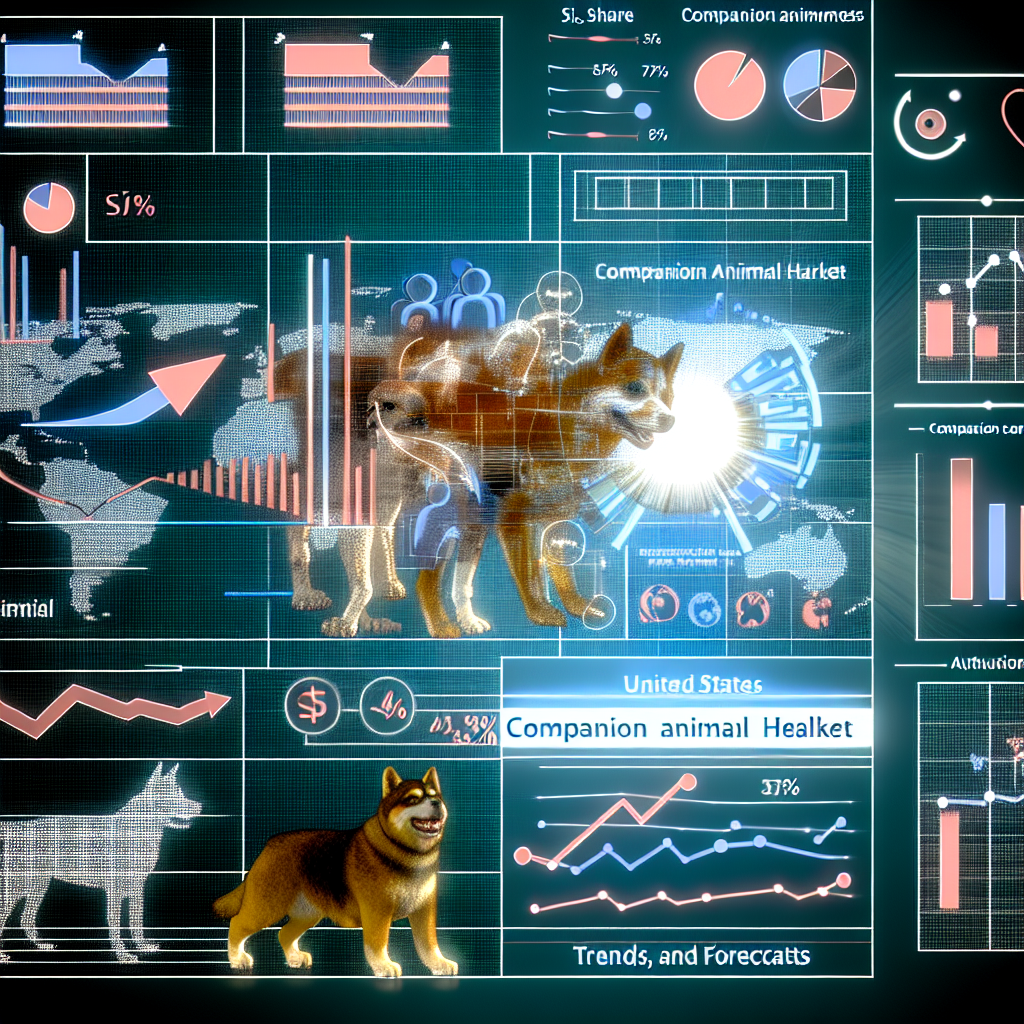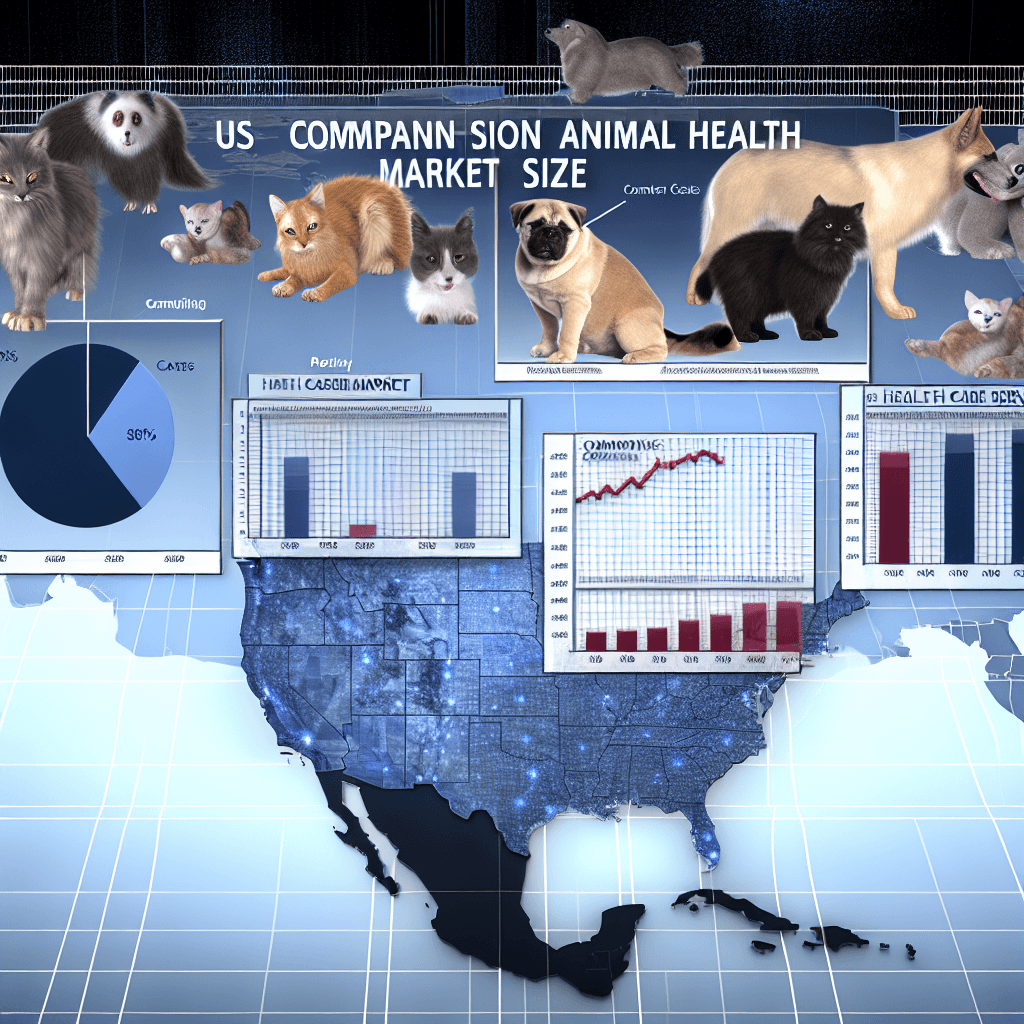Explore the US companion animal health market size, share, trends, and forecasts. Get key insights and data for strategic planning.
US Companion Animal Health Market Size, Share, Trends & Forecast

Table of Contents
US Companion Animal Health Market Size, Share, Trends & Forecast

The US companion animal health market is a dynamic sector characterized by robust growth and significant contributions to the overall veterinary healthcare industry. This article delves into the current market size, shares, trends, and provides a forecast, highlighting the key drivers, challenges, and opportunities within the sector. By examining various aspects of the market, including technological advancements, regulatory frameworks, and consumer behavior, this analysis offers a comprehensive overview of the state and future of companion animal health in the United States.
Current Market Overview
The US companion animal health market has witnessed substantial growth over the past decade. This growth is primarily driven by an increasing pet population, rising pet care expenditure, and greater awareness of animal health and welfare. According to a report by the American Pet Products Association (APPA), approximately 67% of U.S. households, or about 85 million families, own a pet. This increase in pet ownership directly correlates with the expansion of the animal health market.
Market Size and Share
As of the latest reports, the US companion animal health market is valued at several billion dollars, with expectations for continued growth. The market is segmented based on animal type, product type, distribution channel, and geography. Dogs and cats represent the largest segments, owing to their high population and the strong bond between these pets and their owners, which translates into higher spending on healthcare.
Key Trends Influencing the Market
- Humanization of Pets: Increasingly, pets are considered as part of the family, a trend that has led to greater attention to health and wellness, paralleling the care that would be provided to a human family member.
- Technological Advancements: Innovations such as telemedicine, wearable health monitors, and mobile apps for pet health management are transforming pet healthcare.
- Preventive Healthcare: There is a growing emphasis on preventive healthcare measures, including vaccinations, regular check-ups, and dietary management, which are becoming more prevalent among pet owners.
- Regulatory Support: Increased regulatory support for animal health products, including faster approval processes for new drugs and treatments, also drives the market.
Market Challenges
Despite the positive outlook, the market faces several challenges that could impede growth. These include high costs of veterinary services, lack of access to veterinary care in rural areas, and issues related to pet insurance, such as coverage limitations and high premiums. Additionally, the market must navigate complex regulatory environments that can vary significantly from one state to another.
Market Opportunities
The US companion animal health market is ripe with opportunities for growth and innovation. Key areas include:
- Expansion of Service Offerings: Veterinary clinics and hospitals are expanding their services to include specialized care, such as oncology, cardiology, and dentistry, which can provide new revenue streams.
- Development of Generic Drugs: As patents for several key veterinary drugs expire, there is potential for the development and marketing of generic alternatives that are more cost-effective.
- Increased Focus on Nutraceuticals: There is a growing demand for supplements and nutritional products designed to improve pet health, which represents a significant market opportunity.
Impact of COVID-19 on the Market
The COVID-19 pandemic has had a mixed impact on the US companion animal health market. On one hand, the initial lockdowns and economic downturn led to reduced veterinary visits and spending on pet healthcare. On the other hand, the pandemic has resulted in a significant increase in pet adoption and ownership, which could lead to increased demand for animal health products and services in the long term.
Future Market Forecast
Looking ahead, the US companion animal health market is expected to continue its growth trajectory. Analysts predict a compound annual growth rate (CAGR) of approximately 5% to 7% over the next five years. This growth will likely be supported by ongoing trends such as pet humanization, technological advancements, and increased spending on pet health.
Conclusion
In conclusion, the US companion animal health market presents a promising landscape for growth and innovation. With an increasing number of households owning pets and a rising trend in pet humanization, the demand for veterinary services and animal health products is expected to surge. While challenges such as high costs and regulatory hurdles exist, the opportunities in expanding service offerings, developing generic drugs, and focusing on preventive healthcare and nutraceuticals are likely to drive the market forward. Stakeholders in the veterinary and pet care industries should consider these factors and trends to strategically position themselves in this evolving market.
Overall, the future of the US companion animal health market looks bright, with numerous opportunities for both existing players and new entrants to make a significant impact on the health and well-being of pets across the nation.








